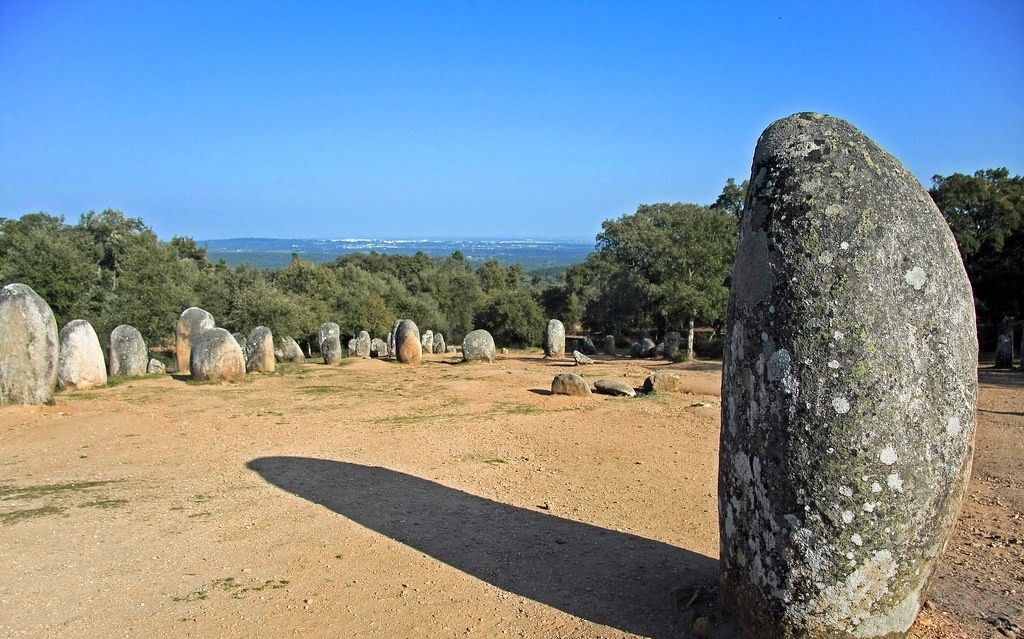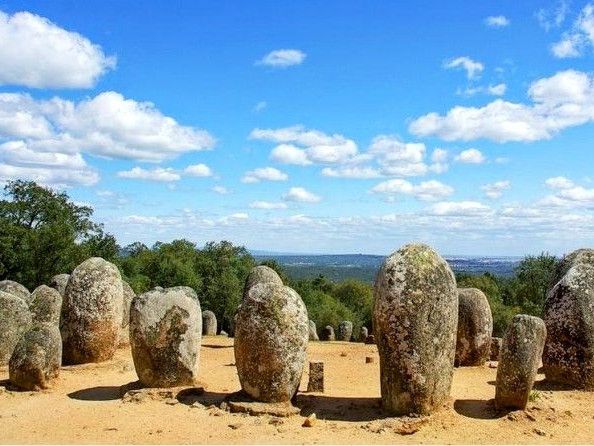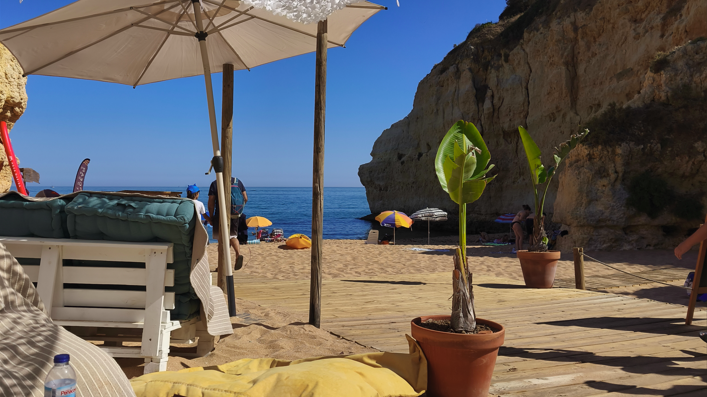Among its most intriguing archaeological sites are the Neolithic stone circles, which stand as silent witnesses to a time when prehistoric communities thrived in this Iberian region. These ancient structures, often surrounded by a veil of mystery, offer invaluable insights into the social, cultural and spiritual life of the Neolithic peoples who inhabited this territory.
The Neolithic Era in Portugal
The Neolithic period in Portugal began around 6000 BCE and extended until approximately 2500 BCE, marking a significant shift from nomadic lifestyles to settled farming communities. This era saw the development of agriculture and animal husbandry, which profoundly changed the way people interacted with their environment and each other. As communities became more stable, they began to construct permanent dwellings and communal structures, leading to the emergence of megalithic architecture.
Defining Stone Circles
Stone circles are prehistoric structures characterised by a circular arrangement of upright stones. These megalithic structures are found across Europe, including in my home country of Wales. Just like the ones I've visited in Wales, the ones in Portugal possess unique traits that reflect the cultural and geographical context of the region. They are often associated with burial practices, ritualistic activities and astronomical alignments, hinting at a complex worldview and an understanding of celestial events among Neolithic peoples.
Notable Stone Circles in Portugal
Portugal is home to several notable stone circles, each contributing to our understanding of the Neolithic period. Among these are the following:
1. The Almendres Cromlech
Located in Alentejo, near Évora, the Almendres Cromlech is one of the largest and oldest megalithic sites in Portugal. Dating back to around 4500 BCE, this site consists of over 90 stones arranged in an elliptical formation. The stones vary in size and shape, some intricately decorated with cupules (small, round depressions that may have had ritual significance). The Almendres Cromlech is believed to have served as a ceremonial site, possibly used for rituals related to fertility or ancestor worship.
The site's strategic positioning on a hill provides an unobstructed view of the surrounding landscape, which may have further enhanced its significance as a communal space for gatherings and celebrations. Recent archaeological findings suggest that the stones may have been aligned with celestial events, further indicating an advanced understanding of astronomy among Neolithic communities.
2. The Cromlech of the Roda and the Menhir of São Cristóvão
Another significant site is the Cromlech of the Roda, located near the village of Roda in Alentejo. This circular arrangement of stones is complemented by the nearby Menhir of São Cristóvão, a tall, upright stone which may have served as a marker or a boundary for the ceremonial space. The Roda Cromlech is lesser-known compared to Almendres but is equally compelling, with its stones displaying signs of human interaction, including carvings that may represent prehistoric art.
The combination of a stone circle and a menhir at this site demonstrates the complexity of Neolithic construction and the integration of different forms of megalithic structures. The Roda Cromlech may have been used for community gatherings, rituals and possibly as a solar calendar, reflecting the societies' reliance on agricultural cycles.
3. The Stone Circle of Xara
Located near the town of Almeirim, the Stone Circle of Xara is less frequently discussed in academia but is of equal importance as the others. Again, this site features a circular arrangement of stones that likely served communal and ritual purposes. Although much is still unknown about its specific functions, the presence of pottery fragments and other artifacts in the vicinity suggests that the site was a focal point for the surrounding community.
Excavations at Xara have revealed that the stones were deliberately placed and aligned, once again indicating a connection to celestial phenomena. The similarities between the stone circle at Xara and other European megalithic structures suggest shared cultural practices and beliefs across different regions during the Neolithic period.

Cultural Significance of Stone Circles
The construction and use of stone circles in Neolithic Portugal reveal profound cultural significance. These sites likely functioned as ceremonial spaces where communities gathered for rituals, social events and ancestral remembrance. The collective effort required to erect these monumental structures indicates a high degree of cooperation and social organisation.
Stone circles also played a crucial role in marking time and reinforcing communal identities. Many researchers believe that these structures acted as calendars, aligning with astronomical events such as solstices and equinoxes. This alignment not only reinforced agricultural cycles but also connected the Neolithic people to natural rhythms, strengthening their bond with the land and nature in general.
Preservation and Conservation
Despite their cultural and historical significance, many of Portugal's Neolithic stone circles face threats from urbanisation, agricultural expansion and natural erosion by wind and rain. Preservation efforts are essential to ensure that these sites are protected for future generations. Archaeologists and conservationists advocate for the designation of these areas as protected heritage sites, allowing for research, education, and sustainable tourism that respects these ancient landmarks without disrupting them.
Community involvement is crucial for the preservation of these sites. Education programs that teach locals about the importance of their archaeological heritage can foster a sense of pride and responsibility toward these ancient structures. Partnership between the government, academic institutions and local communities can create mutually beneficial efforts to safeguard and promote these cultural treasures.
In summary
The Neolithic stone circles of Portugal stand as a testament to the ingenuity, spirituality, and social organisation of prehistoric communities. Sites like the Almendres Cromlech and the Stone Circle of Xara invite us to reflect on the lives of those who came before us, offering a glimpse into their beliefs and practices. Preserving these remarkable structures is not merely a matter of protecting the past but ensures that future generations can connect with our collective history and the stories embedded in the stones. As we uncover more about these enigmatic structures, we deepen our understanding of the Neolithic era and the rich tapestry of human history in Portugal and beyond.
Douglas Hughes is a UK-based writer producing general interest articles ranging from travel pieces to classic motoring.
















This article is complete nonsense. The author lists two stone circles that absolutely do NOT exist. There is no "Cromlech of the Roda" (I don't even know if there is a village of "Roda in the Alentejo") and there is no "stone circle of Xara". Why would you publish such rubbish? Is this author even a person, or is it just AI-generated slop?
If you want to publish information about prehistoric sites in Portugal, why don't you talk to somebody who actually knows something about it????
By John Iglar from Lisbon on 28 Sep 2025, 14:18